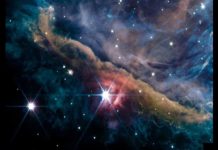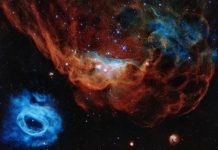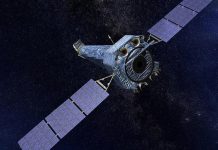
Feb. 4 (UPI) — A new image from the Hubble Space Telescope displays the beauty of a stellar death — in this case, the death of a low-mass star, similar to our sun in size.
Once a red giant, the star is currently in a transitionary phase: It’s on its way to becoming a planetary nebula. The Hubble image reveals the star’s layers of gas and dust being shed and thrown outward. The expelled material, now forming clouds, could eventually form new stars and planets.
Astronomers rarely catch dying red giants in their transitionary phase. It will only be a few thousand years before the star is a pure planetary nebula — a blip in space time.
By then, the spent stellar material will have slowed down and taken on more convoluted shapes. As the Hubble shows, the streams of gas are still energy-filled and direct. The waves of yellow gas seen in the image are traveling at speeds of 621,371 miles per hour.
The burgeoning Calabash Nebula is also known as the Rotten Egg Nebula, because of its large concentrations of sulfur. The nebula is found within the constellation of Puppis, 5,000 light-years from Earth.
The Hubble Space Telescope is managed as a joint partnership between NASA and the European Space Agency.





